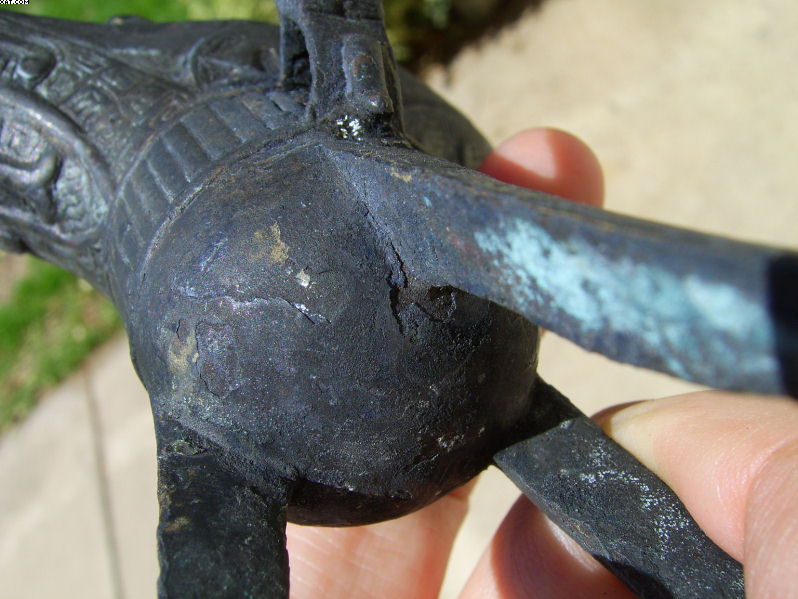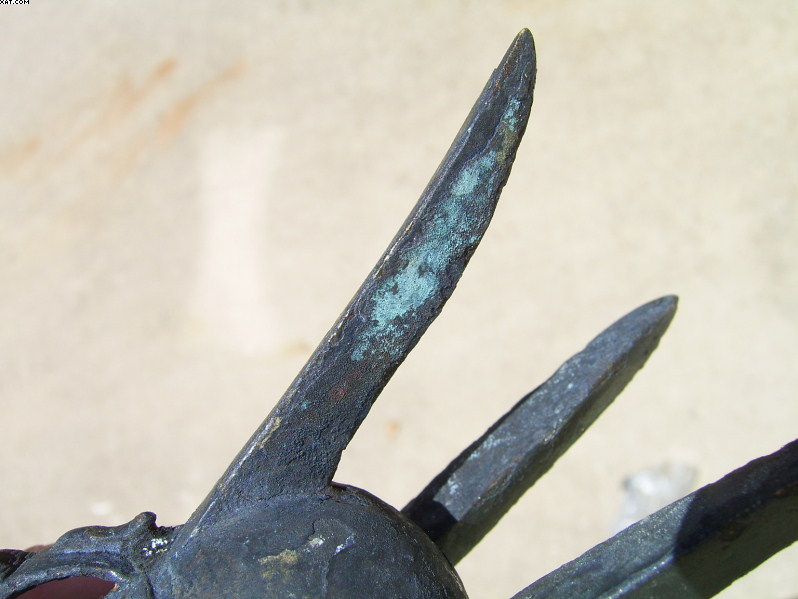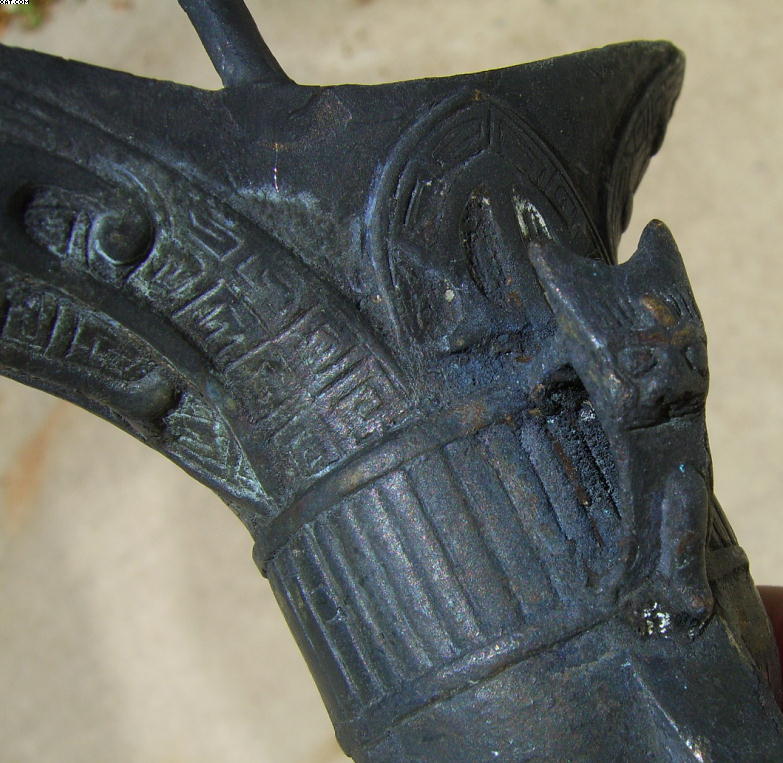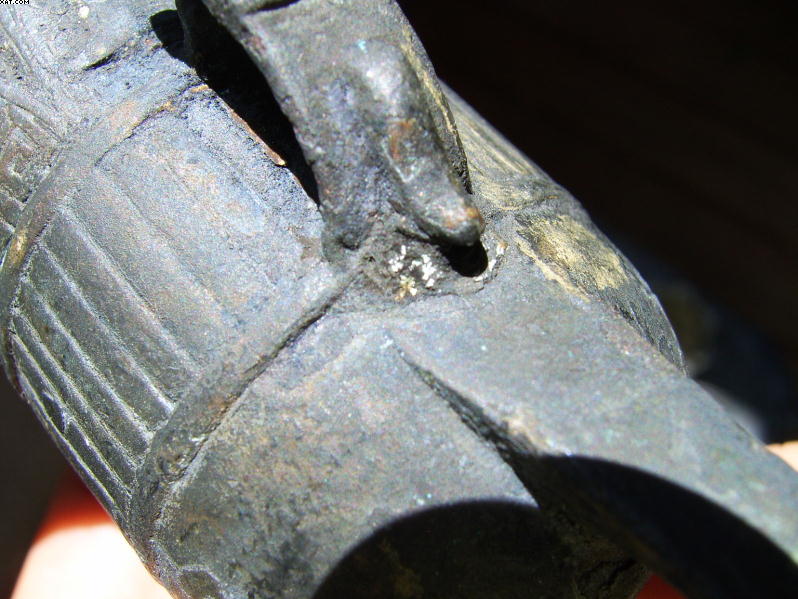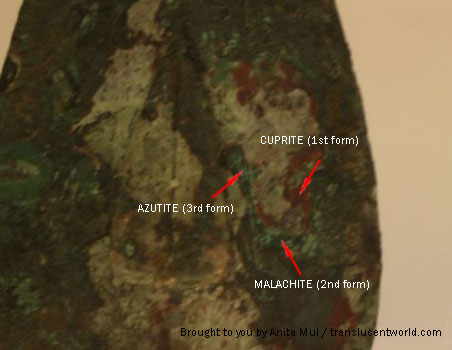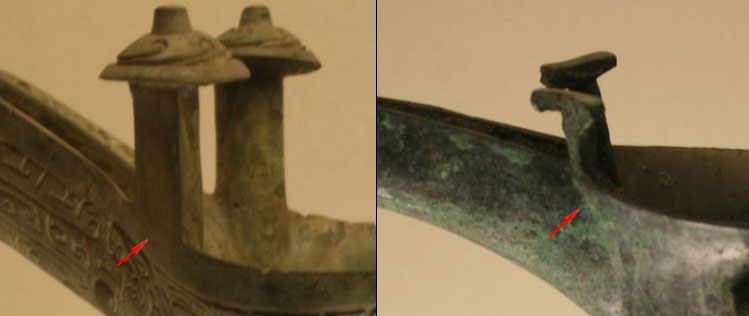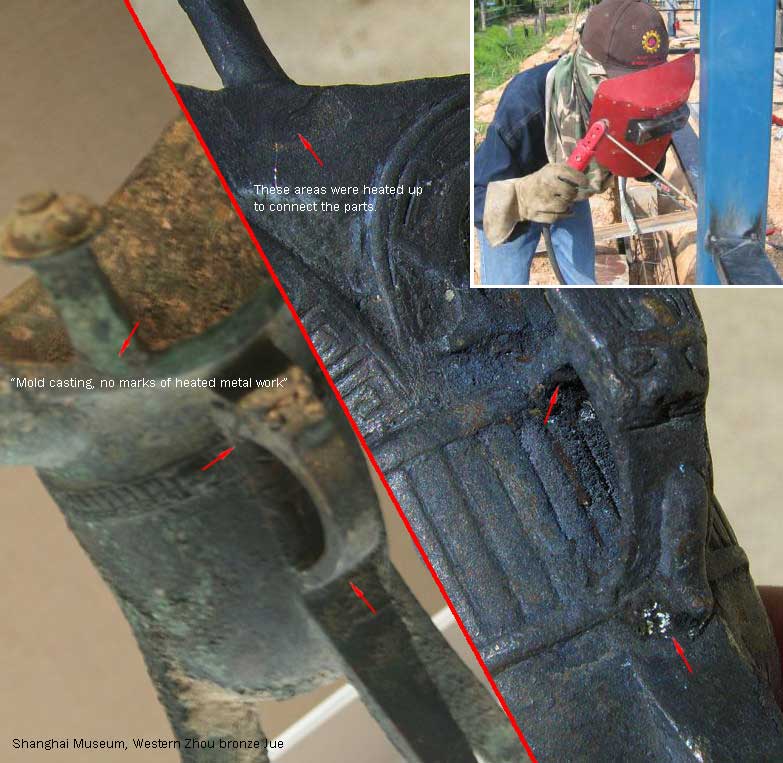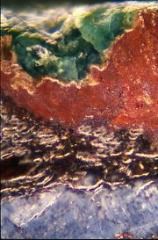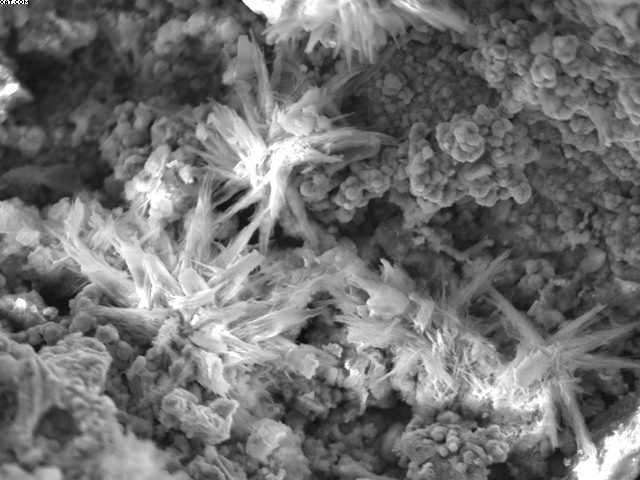
|
Subject:Re: Black Patina & Archaic Bronze
Posted By: Doug and Moyra Thu, Jun 25, 2009
Pipane:
I understand that you believe that this piece is a fake, and that patina looks wrong. That's fine. You, and others on this board, are experienced collectors and are freely sharing your expertise in an open forum, and that is a wonderful thing. You are entitled to your expert opinion. And I also agree with you that 20 true experts will always be able to properly authenticate "good"
pieces - i.e. pieces that are well preserved, good provenance, well documented similar examples,
no style inconsistencies, extensive corroborative scientific test results, etc. Unfortunately,
a significant percentage of truly authentic artifacts do not fall into this ideal category,
and are mixed in a great pool of fakes. Does that mean that we should just ignore all of them?
If I had purchased this piece from a Beijing dealer on eBay, I would never have gone to all the trouble of having the patina tested. I would know that the probability of this being authentic was virtually zero. For lots of legal and economic reasons, there are probably no authentic ancient Chinese bronze ritual vessels being sold on eBay from China based dealers. But I didn't purchase this piece from a China dealer. I bought it from a trusted Japanese dealer who found it in an obscure private Japanese collection. That doesn't guarantee anything, but that simply improves the odds that this piece, whatever it is, might actually be an authentic "something".
When I received this piece, I spent a lot of time looking at the construction and corrosion. We don't have many bronzes, but we do have many authentic metalware pieces such as cloisonne and Canton Enamel. Like everyone else, sometimes we have accidentally purchased fake pieces only to discover the trickery once we have the pieces in
our hands. We have seen examples of fake patinas close up, and were struck by just how different this piece was from the usual junk. In fact, if you go to the internet and look on eBay you can see maybe 50 fake Jue cups from China. Not one will look anything like this piece. Not one has a black patina. Why? Because everyone "expects" to see cuprite, malachite and azurite on "authentic" examples. For the most part, authentic examples do NOT have black patinas, so why would a faker go to all the trouble of copying something that nobody believes? And in an odd small size?
Our curiosity was raised when we visited the San Antonio Museum of Art, and saw a black patina Jue
cup on display. We noticed that the black patina on that piece was very similar to what was on our piece. So we asked the question - how can one create a fake black patina? And that's how all this started. No person has yet explained how a convincing coherent black patina like this can be artificially created. From our research, we know how convincing looking "black patinas" could be artificially created, but the tests done on this piece prove that none of those easy and common methods were used on this cup.
For a very modest $85.00 for two hours of lab time, we had the opportunity to examine the corrosion products in a world class laboratory with an expert PhD minerologist. The analysis of these corrosion products shows that they are consistent with authentic archeological examples. We will email anyone interested the test results and they can look at them. Please do. If anyone can scientifically explain how a patina like this can be artificially created, even in a laboratory, please share this valuable
information. I'm very willing to change my conclusions with scientific evidence.
So, we bought an interesting piece, inexpensively, from a reputable dealer, that I believe has a high probability of being very old. Good enough. You are correct that additional tests could marginally increase that probability, but no number of tests will ever prove with 100% certainty that this is X years old. And why bother to spend large amounts of money on a piece that will never be worth that much? We're not talking about a bronze head from the Summer Palace here. :)
Cheers


|
 Black Patina & Archaic Bronze
Black Patina & Archaic Bronze  ( China & Japan ) - Doug and Moyra - Jun 01, 2009 (04:45 PM)
( China & Japan ) - Doug and Moyra - Jun 01, 2009 (04:45 PM)  Re: Black Patina & Archaic Bronze - pierrevdw - Jun 02, 2009 (07:13 AM)
Re: Black Patina & Archaic Bronze - pierrevdw - Jun 02, 2009 (07:13 AM)  Re: Black Patina & Archaic Bronze
Re: Black Patina & Archaic Bronze  - Doug and Moyra - Jun 03, 2009 (12:12 AM)
- Doug and Moyra - Jun 03, 2009 (12:12 AM)  Re: Black Patina & Archaic Bronze
Re: Black Patina & Archaic Bronze  - Anita Mui - Jun 03, 2009 (12:45 AM)
- Anita Mui - Jun 03, 2009 (12:45 AM)  Re: Black Patina & Archaic Bronze - pipane - Jun 03, 2009 (03:53 AM)
Re: Black Patina & Archaic Bronze - pipane - Jun 03, 2009 (03:53 AM)  Re: Black Patina & Archaic Bronze - Doug and Moyra - Jun 03, 2009 (11:17 PM)
Re: Black Patina & Archaic Bronze - Doug and Moyra - Jun 03, 2009 (11:17 PM)  Re: Black Patina & Archaic Bronze
Re: Black Patina & Archaic Bronze  - Anita Mui - Jun 03, 2009 (11:32 PM)
- Anita Mui - Jun 03, 2009 (11:32 PM)  Re: Black Patina & Archaic Bronze - Anita Mui - Jun 04, 2009 (01:08 AM)
Re: Black Patina & Archaic Bronze - Anita Mui - Jun 04, 2009 (01:08 AM)  Re: Black Patina & Archaic Bronze
Re: Black Patina & Archaic Bronze  - pierrevdw - Jun 04, 2009 (06:46 AM)
- pierrevdw - Jun 04, 2009 (06:46 AM)  Re: Black Patina & Archaic Bronze - Doug and Moyra - Jun 04, 2009 (05:13 PM)
Re: Black Patina & Archaic Bronze - Doug and Moyra - Jun 04, 2009 (05:13 PM)  Re: Black Patina & Archaic Bronze - pierrevdw - Jun 05, 2009 (06:40 AM)
Re: Black Patina & Archaic Bronze - pierrevdw - Jun 05, 2009 (06:40 AM)  Re: Black Patina & Archaic Bronze - Doug and Moyra - Jun 05, 2009 (03:57 PM)
Re: Black Patina & Archaic Bronze - Doug and Moyra - Jun 05, 2009 (03:57 PM)  Re: Black Patina & Archaic Bronze - pipane - Jun 06, 2009 (10:03 PM)
Re: Black Patina & Archaic Bronze - pipane - Jun 06, 2009 (10:03 PM)  Re: Black Patina & Archaic Bronze - Anthony J Allen - Jun 07, 2009 (11:06 PM)
Re: Black Patina & Archaic Bronze - Anthony J Allen - Jun 07, 2009 (11:06 PM)  Re: Black Patina & Archaic Bronze - Doug and Moyra - Jun 08, 2009 (01:18 PM)
Re: Black Patina & Archaic Bronze - Doug and Moyra - Jun 08, 2009 (01:18 PM)  Re: Black Patina & Archaic Bronze - Anita Mui - Jun 09, 2009 (03:42 AM)
Re: Black Patina & Archaic Bronze - Anita Mui - Jun 09, 2009 (03:42 AM)  Re: Black Patina & Archaic Bronze - Anita Mui - Jun 09, 2009 (10:51 PM)
Re: Black Patina & Archaic Bronze - Anita Mui - Jun 09, 2009 (10:51 PM)  Re: Black Patina & Archaic Bronze
Re: Black Patina & Archaic Bronze  - Doug and Moyra - Jun 10, 2009 (02:00 PM)
- Doug and Moyra - Jun 10, 2009 (02:00 PM)  Re: Black Patina & Archaic Bronze - Anita Mui - Jun 11, 2009 (02:06 AM)
Re: Black Patina & Archaic Bronze - Anita Mui - Jun 11, 2009 (02:06 AM)  Re: Black Patina & Archaic Bronze - Doug and Moyra - Jun 12, 2009 (10:46 AM)
Re: Black Patina & Archaic Bronze - Doug and Moyra - Jun 12, 2009 (10:46 AM)  Re: Black Patina & Archaic Bronze - Anita Mui - Jun 15, 2009 (12:28 AM)
Re: Black Patina & Archaic Bronze - Anita Mui - Jun 15, 2009 (12:28 AM)  Re: Black Patina & Archaic Bronze - pipane - Jun 17, 2009 (12:36 PM)
Re: Black Patina & Archaic Bronze - pipane - Jun 17, 2009 (12:36 PM)  Re: Black Patina & Archaic Bronze - Doug and Moyra - Jun 18, 2009 (12:27 AM)
Re: Black Patina & Archaic Bronze - Doug and Moyra - Jun 18, 2009 (12:27 AM)  Re: Black Patina & Archaic Bronze - James - Jun 18, 2009 (12:03 PM)
Re: Black Patina & Archaic Bronze - James - Jun 18, 2009 (12:03 PM)  Re: Black Patina & Archaic Bronze - Anthony J Allen - Jun 21, 2009 (12:59 PM)
Re: Black Patina & Archaic Bronze - Anthony J Allen - Jun 21, 2009 (12:59 PM)  Re: Black Patina & Archaic Bronze - Doug and Moyra - Jun 23, 2009 (12:05 AM)
Re: Black Patina & Archaic Bronze - Doug and Moyra - Jun 23, 2009 (12:05 AM)  Re: Recap - pipane - Jun 24, 2009 (03:00 AM)
Re: Recap - pipane - Jun 24, 2009 (03:00 AM)  Re: Black Patina & Archaic Bronze - pipane - Jun 24, 2009 (03:04 AM)
Re: Black Patina & Archaic Bronze - pipane - Jun 24, 2009 (03:04 AM)  Re: Black Patina & Archaic Bronze - Doug and Moyra - Jun 25, 2009 (01:31 PM)
Re: Black Patina & Archaic Bronze - Doug and Moyra - Jun 25, 2009 (01:31 PM)  Re: Black Patina & Archaic Bronze - Doug and Moyra - Jul 09, 2009 (11:05 AM)
Re: Black Patina & Archaic Bronze - Doug and Moyra - Jul 09, 2009 (11:05 AM)  Re: Black Patina & Archaic Bronze - Hunter - Mar 05, 2015 (09:42 PM)
Re: Black Patina & Archaic Bronze - Hunter - Mar 05, 2015 (09:42 PM)  Re: Black Patina & Archaic Bronze - Vanessa - Sep 30, 2015 (12:02 AM)
Re: Black Patina & Archaic Bronze - Vanessa - Sep 30, 2015 (12:02 AM)  Re:ask two experts and you will get two different answers. - pipane - Jun 24, 2009 (02:36 AM)
Re:ask two experts and you will get two different answers. - pipane - Jun 24, 2009 (02:36 AM) 